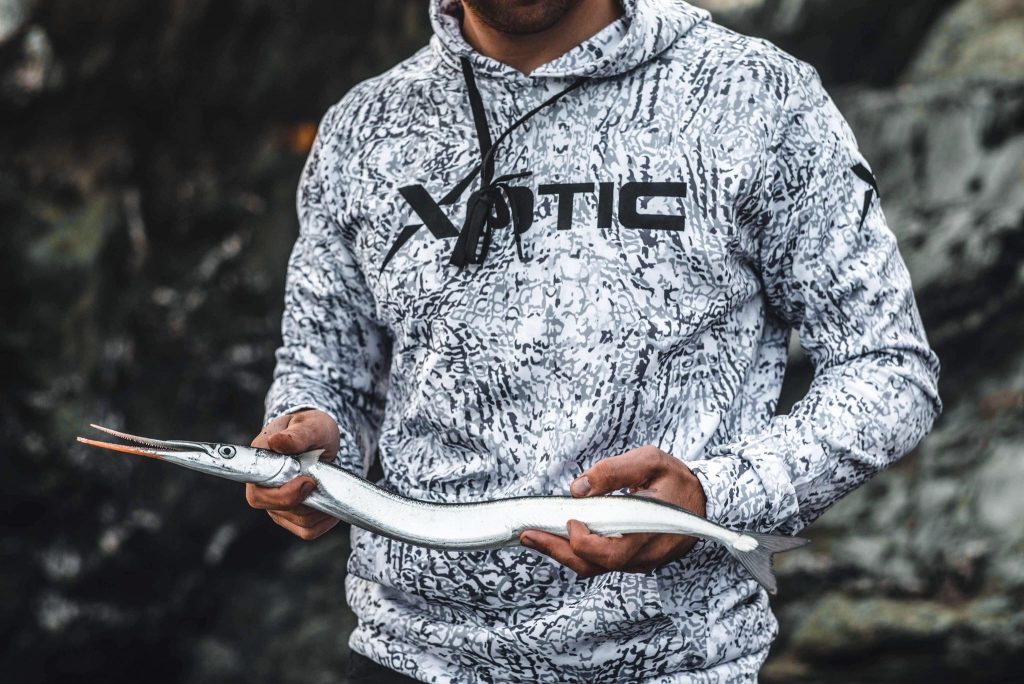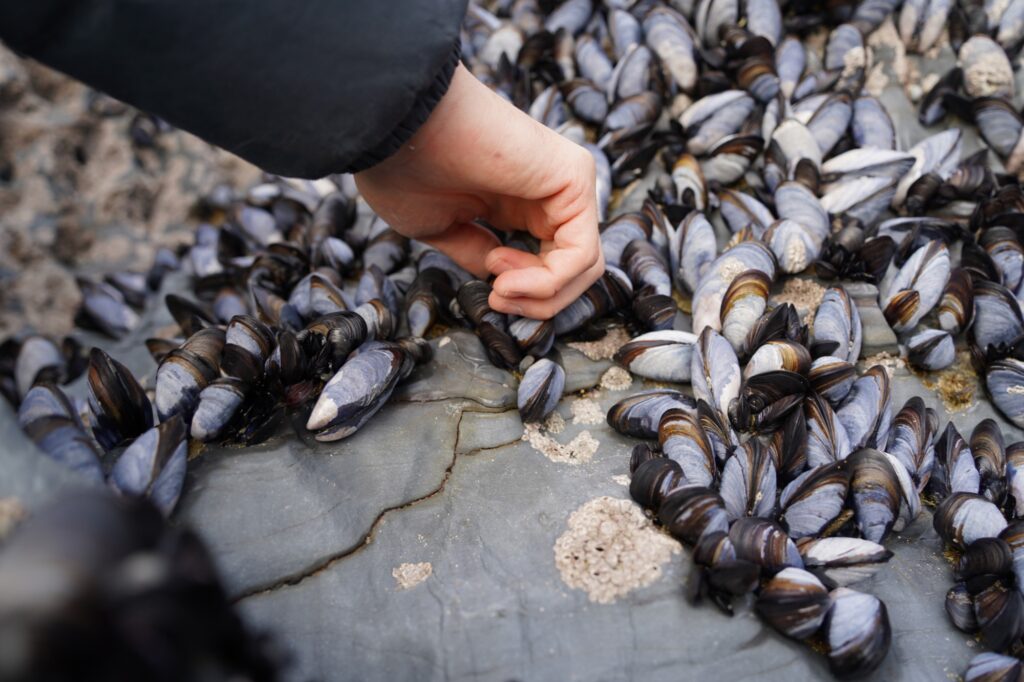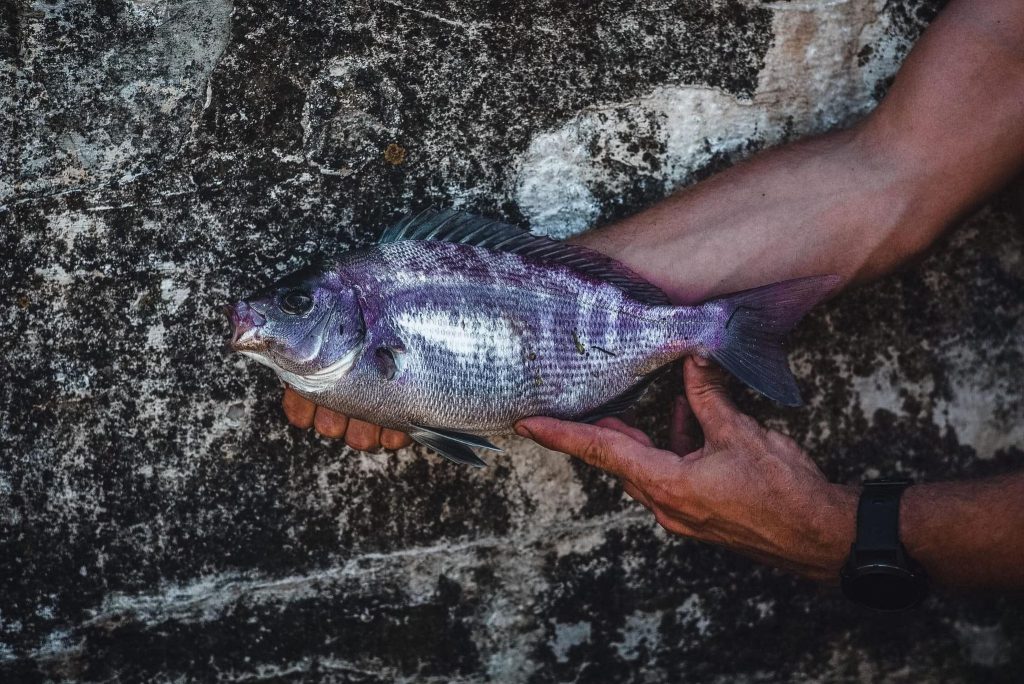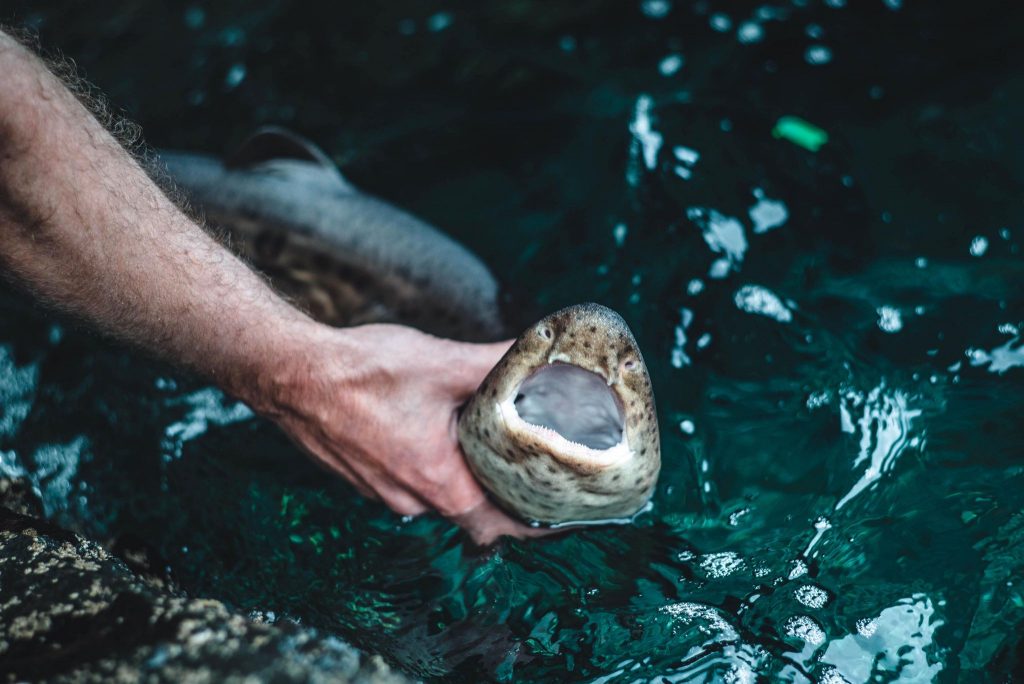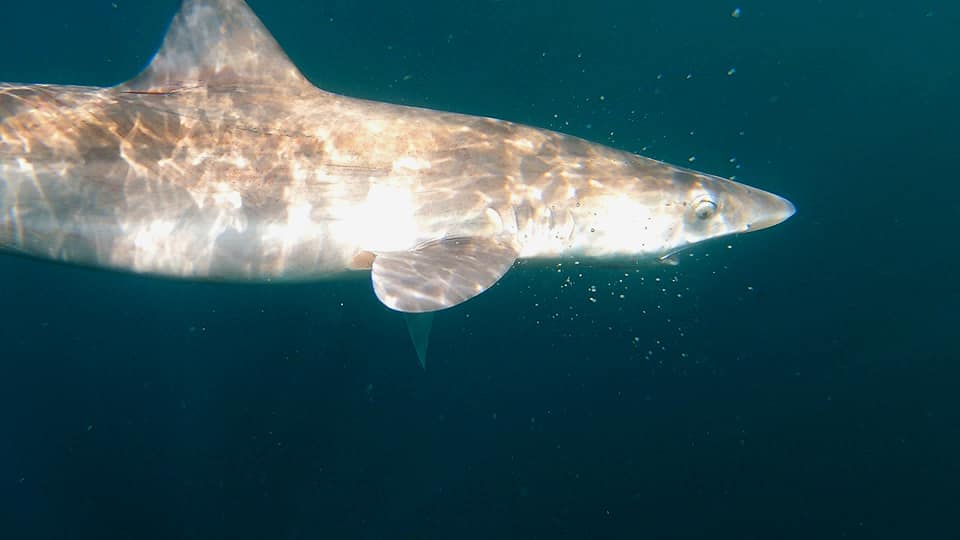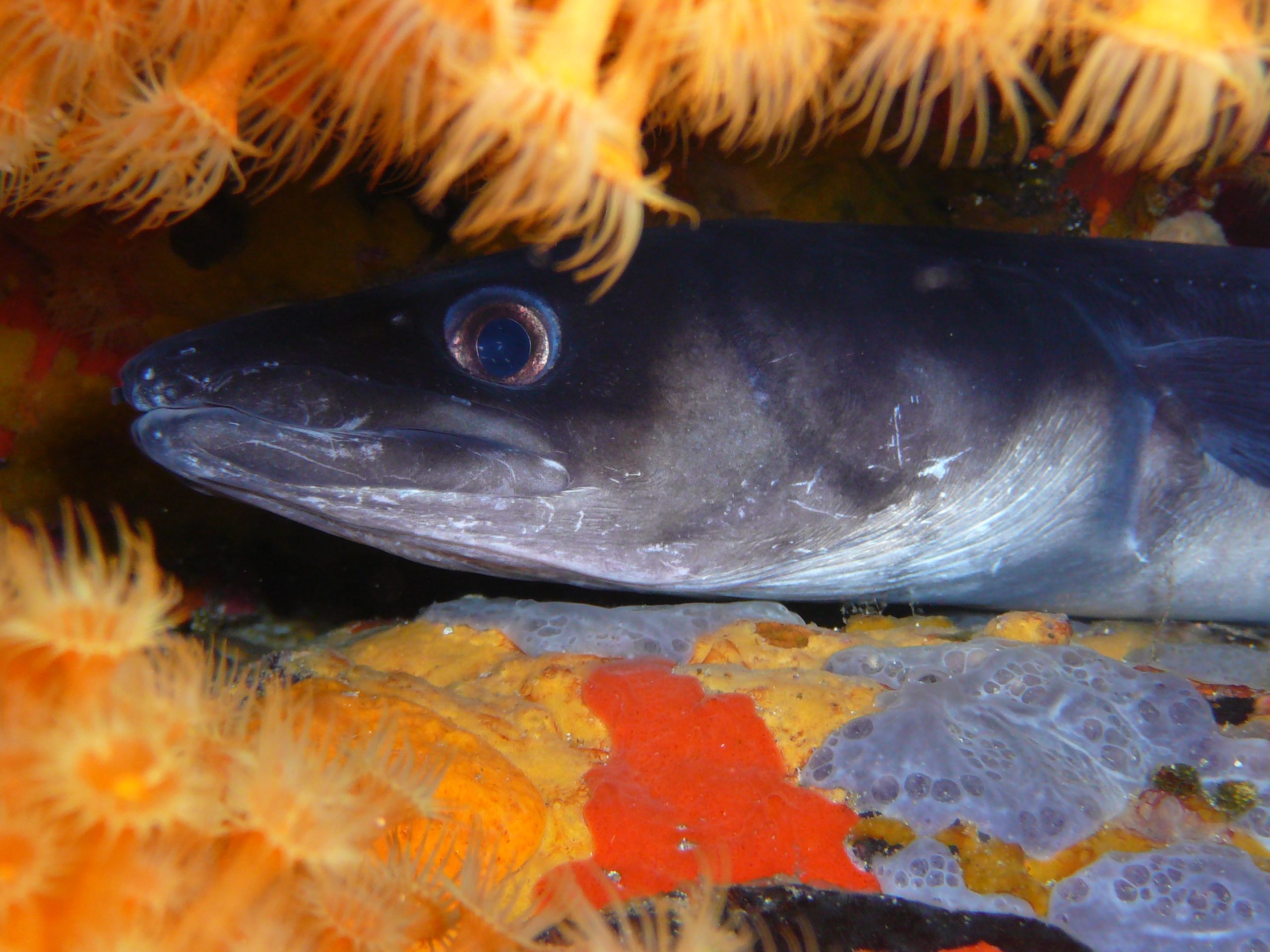
Smastapee, CC BY-SA 3.0 DE , via Wikimedia Commons
Conger eel fishing
Conger are considered one of the few monsters that can be caught in British waters. Despite their snake-like ferocity when snatching passing fish, pulling them into their lairs and devouring them, conger are otherwise timid creatures (except that time a diver had a chunk of his face bitten off, unprovoked!). They don’t hit baits hard and are known for their tentative bites – with larger fish said to have the most gentle bites. They mostly hang out in shipwrecks and under large boulders in deep water, leading private and fairly inactive lives except when on their migratory journeys. These fish spawn between Gibraltar and the Azores – so basically deep in the Atlantic ocean. The water there’s about 3km deep.
Fishmag is reader-supported and earns commissions from affiliate sales, such as from amazon.
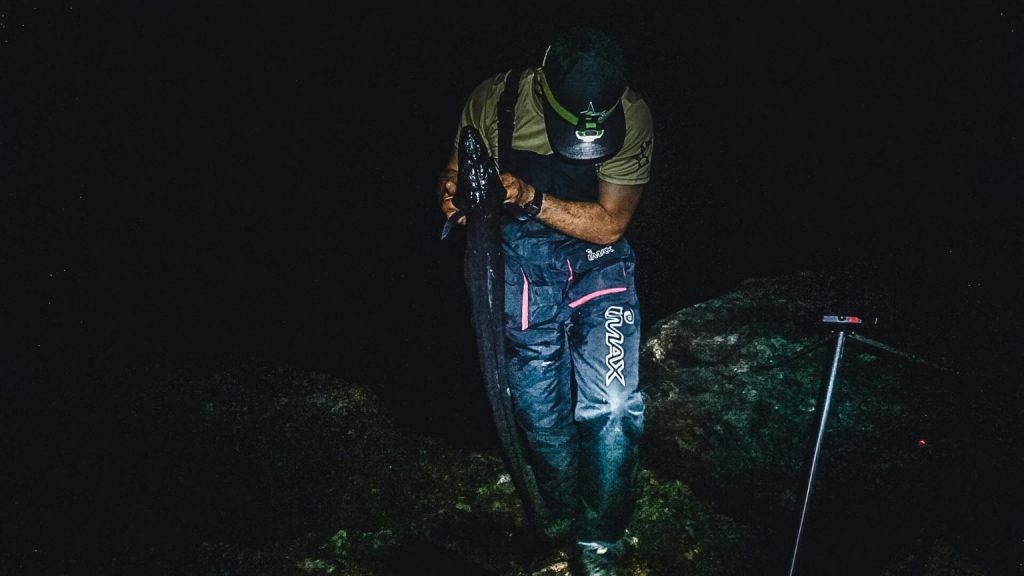
Conger travel long distances for reproduction, producing 15,000,000 eggs. They can tolerate very deep water and smaller specimens come inshore at night to feed. Large congers of over 50lb are generally only caught from boats, or else in a few select locations which are uncommonly deep water close to shore.
When young and smaller in size, conger eels can be differentiated from common eels by their upper jaw which protrudes over the lower. They also have pointed fins, whereas the common eels are rounded.
12. The best bait for conger is a mackerel flapper
Conger love fresh fish, with a mackerel flapper being the most popular, or simply mackerel heads and guts. The key is that the bait is stinky enough to tempt them out of the comfort of their lairs. When shore fishing, flapper rigs with whole mackerel are too large and will result in dropped fish. Try a joey mackerel instead or even just a large subsection of a mackerel. Don’t strike and give the fish line until it has run a couple of metres. This makes it more likely your hook will be set and also prevents your rod from being yanked into the murky depths before you can get to it. It’s important you give conger time to find your bait – retrieving too often isn’t a good idea. Conger need to pick up on the scent of the bait and have that wafting in their face long enough to tempt them to venture out the comfort of their homes to see what’s occurring!
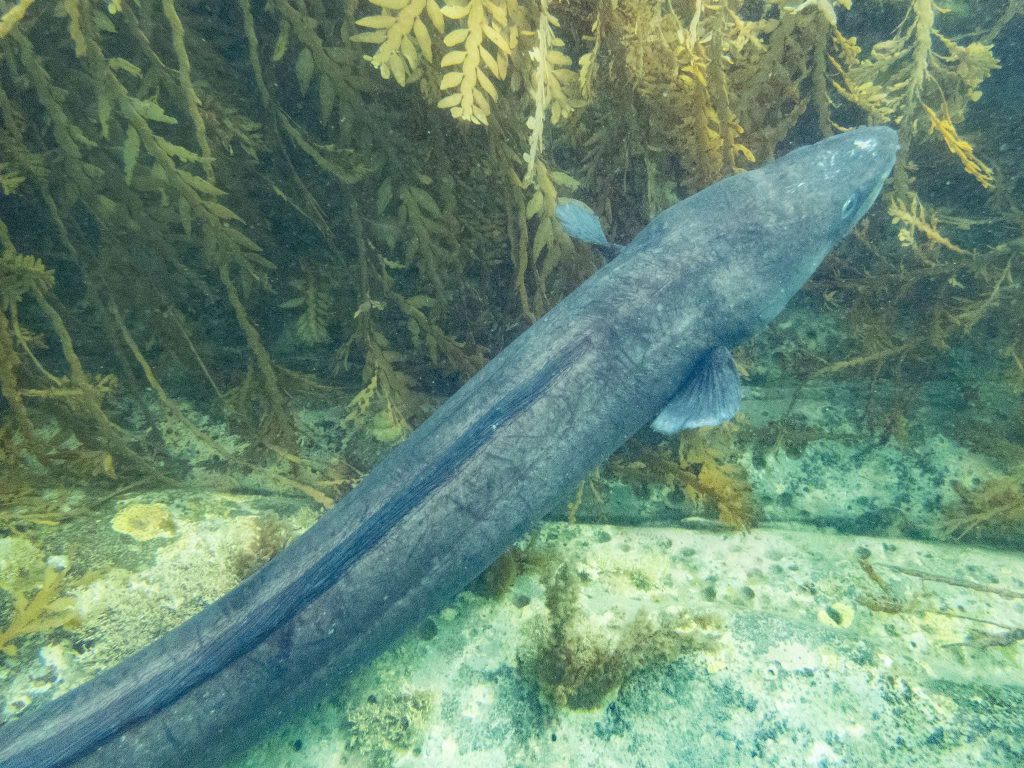
11. Create a conger chum and throw ground bait
Conger eels rely heavily on scent for their hunting and don’t like to leave their lairs for nothing. If they pick up on the oily slick of a whole mackerel drifting over their nose, they’ll make their way out to check it out. Your bait will achieve this effect, but why not really draw them into where you’re fishing with other bits and pieces to eat? Throwing in juicy bits of fish is an excellent idea, especially for longer sessions where you have time for conger to come quite a long way for a feed. You don’t need to throw them good fish – just mackerel heads or bits of chopped-up little whiting will do fine.
10. The best conger fishing seasons are the shoulder seasons
Spring and Autumn are the best time, with June and October being the favourite times of the year to target conger eels. You can catch them year-round in some places near us in the south of England.
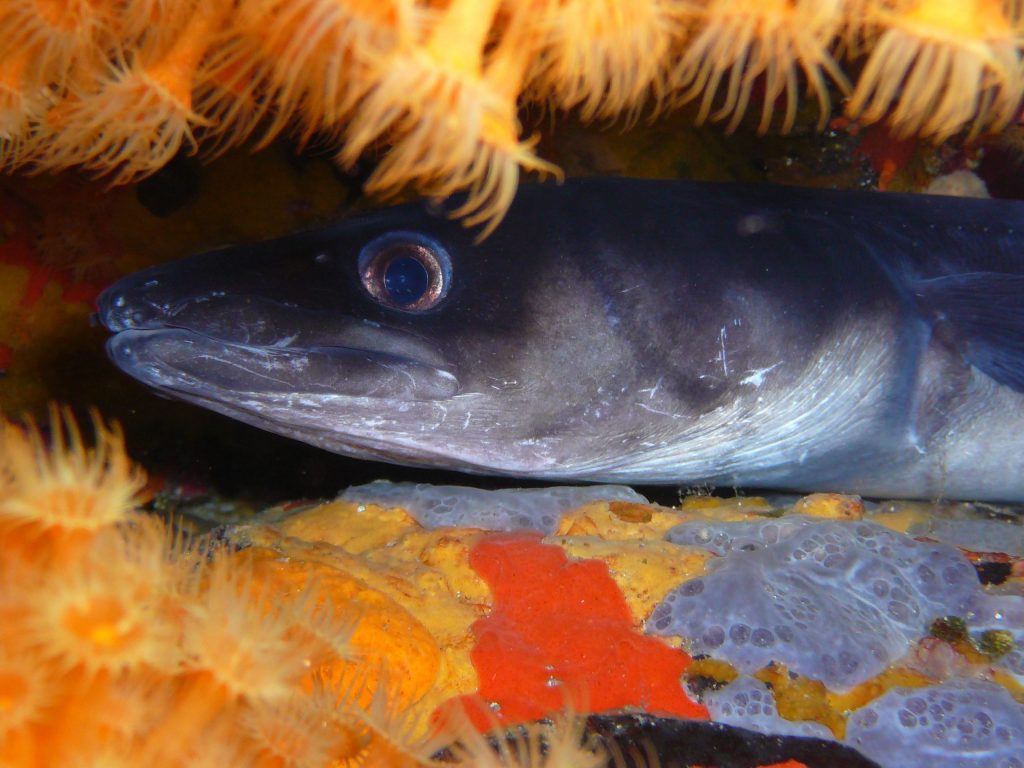
9. The secret to shore fishing for conger is deep water
To fish for conger from the shore you either need access to very deep water or else a well-known spot that conger like to feed, such as the Fal estuary or Chesil Beach where you can fish for conger at night. In deep water spots, it’s possible to fish for conger in the day despite the fish being far more active at night, because so little light reaches the seabed in those places. Conger do come into fairly shallow water at night, but deep water marks are more productive as you’ll be fishing closer to their main residence, whereas at shallow marks you’re relying on them paying you a visit.
You can use Navionics web app to find deep water potential conger marks near you.
8. Conger fishing tackle: ask your misses to buy you a butt pad
You’ll need a heavy boat rod and a butt pad to assist with fighting the fish. Conger can swim backwards and their immediate response to being hooked is to dart back into the wreck and lodge themselves in a crevice. It can feel impossible to get them up at times, but often the fish will come up eventually if you keep fighting. It’s similar to fishing for big ray in that once you get them off the bottom you’re on the home run. A butt pad means your rod isn’t digging into your groin or gut.
7. Boat fishing is the only way to land very big conger
Boat fishing for conger and shore fishing for conger are two different animals. The conger you’ll catch from the shore are unlikely to exceed 50lb and are more likely to be under 25lb. Boat fishing can turn up congers over 100lbs, which is a different beast entirely.
Big conger are caught offshore from wrecks on static baits placed as close to the wreck as possible, without getting snagged. As you can imagine this means most of the challenge of catching them is dealt with by a knowledgeable skipper that knows where the wreck is positioned and can keep the baits away from currents which would prevent them from being fished statically.
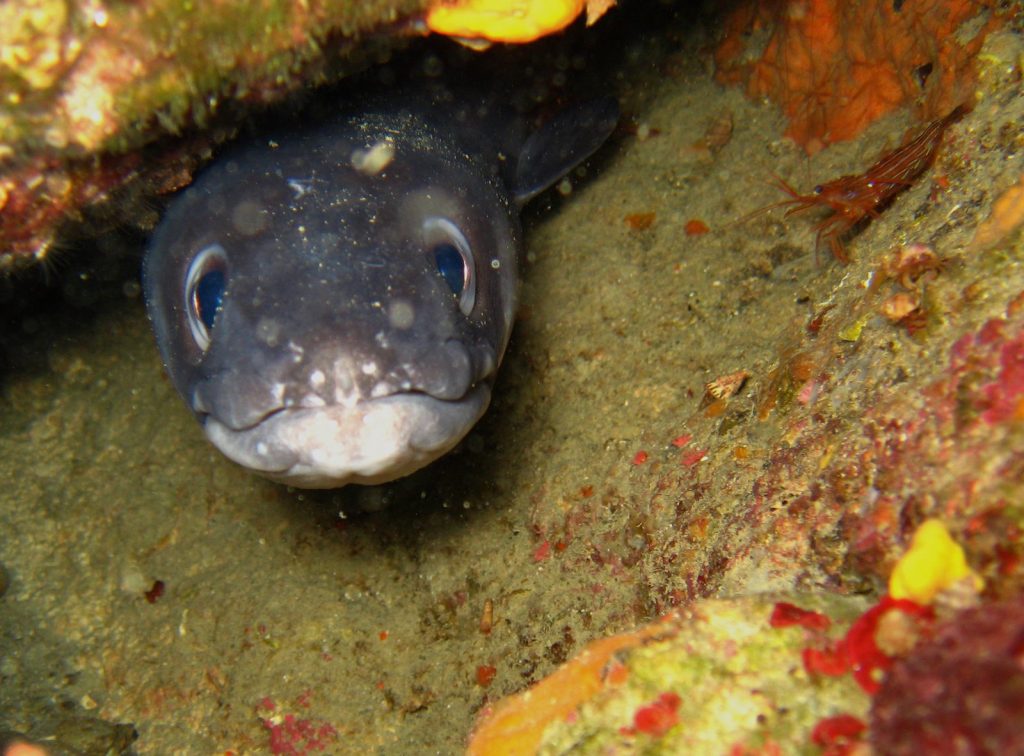
6. Use 150lb monofilament leader and avoid wireless traces
You’ll need to very thick monofilament leader in the 150lb region so the congers mouth doesn’t cut you off. Wire traces work but cut the fish up and so don’t work for catch-and-release fishing.
5. Reach for size 6 – 8/0 hooks for conger
Hooks are typically size 6/0 to 10/0. Avoid rigging baits that are too large and ensure the hook sits proud rather than being tucked away in the meat of your bait – conger are often dropped before they are landed due to not being hooked properly.
4. Use breakaway leads to avoid losing loads of rigs
It’s best to make sure your rig has a breakaway system of some kind so that you don’t lose your entire rig every time you get in a stag since that’s going to happen a lot when targeting conger. One way of doing this is to use breakaway leads which are designed to release your hooks and line and leave the weight in its snag. This way you can easily attach a new one to your rig and you don’t have to retie your rig and rebait your hooks, which means more time for fishing.
3. Use a multiplier if you can, from a boat these reels are essential
Multipliers are used for conger fishing because they can hold a lot of line and are stronger than fixed spool reels. If you’re fishing in deep water you need a reel that holds a lot of line and a gear ratio that allows you to retrieve fish up from the depths quickly. It’s also essential that you get the conger out of its hole as fast as possible, as they swim backwards and will immediately bolt for their holes once hooked. Once your line is wrapped up in the rocks around the hole entrance you’re screwed and so is the eel. You need tough tackle for these fish – being caught under gunned means lost fish, so multipliers are best. They’re also very easy to use for conger because you don’t need to cast from boats or deep water piers, so birds’ nests aren’t an issue.
2. If you’re based up North, go on a conger boat trip in the south
The south coast of the UK has the best Conger fishing, with Cornwall arguably the best. Mevagissey, Plymouth, Looe, Dartmouth, Salcombe and Brixham all have charter boats that will take you conger fishing. Due to the distance required to reach the marks these trips won’t be less than 4 hours and are often 8 hours long. It amazes me how many of these eels are caught, given that they seem to be targeted heavily by boat anglers at the same venues over and over. However, they can’t effectively be targeted by commercial boats, which probably helps to keep their numbers up. That and the fact that nearly all congers are returned to the sea by anglers – few feel up to tackling the conger in the kitchen, unsurprisingly – given that even once dead they writhe for days.
1. Use a T-bar to unhook conger
Finally, you’ll be needing a T-bar to effectively unhook these fish. It will make your life easier and help you get the conger back in good shape so they can reproduce and enjoy the rest of their life undisturbed in a hole.

